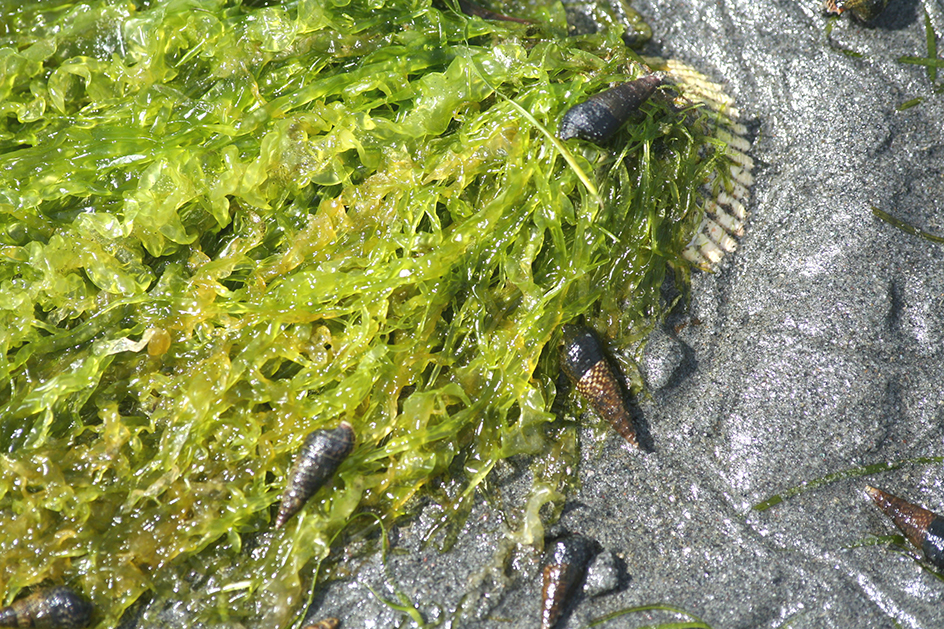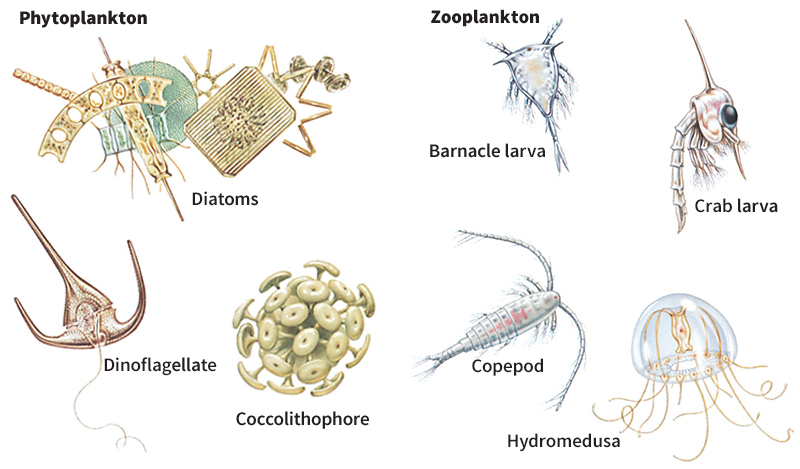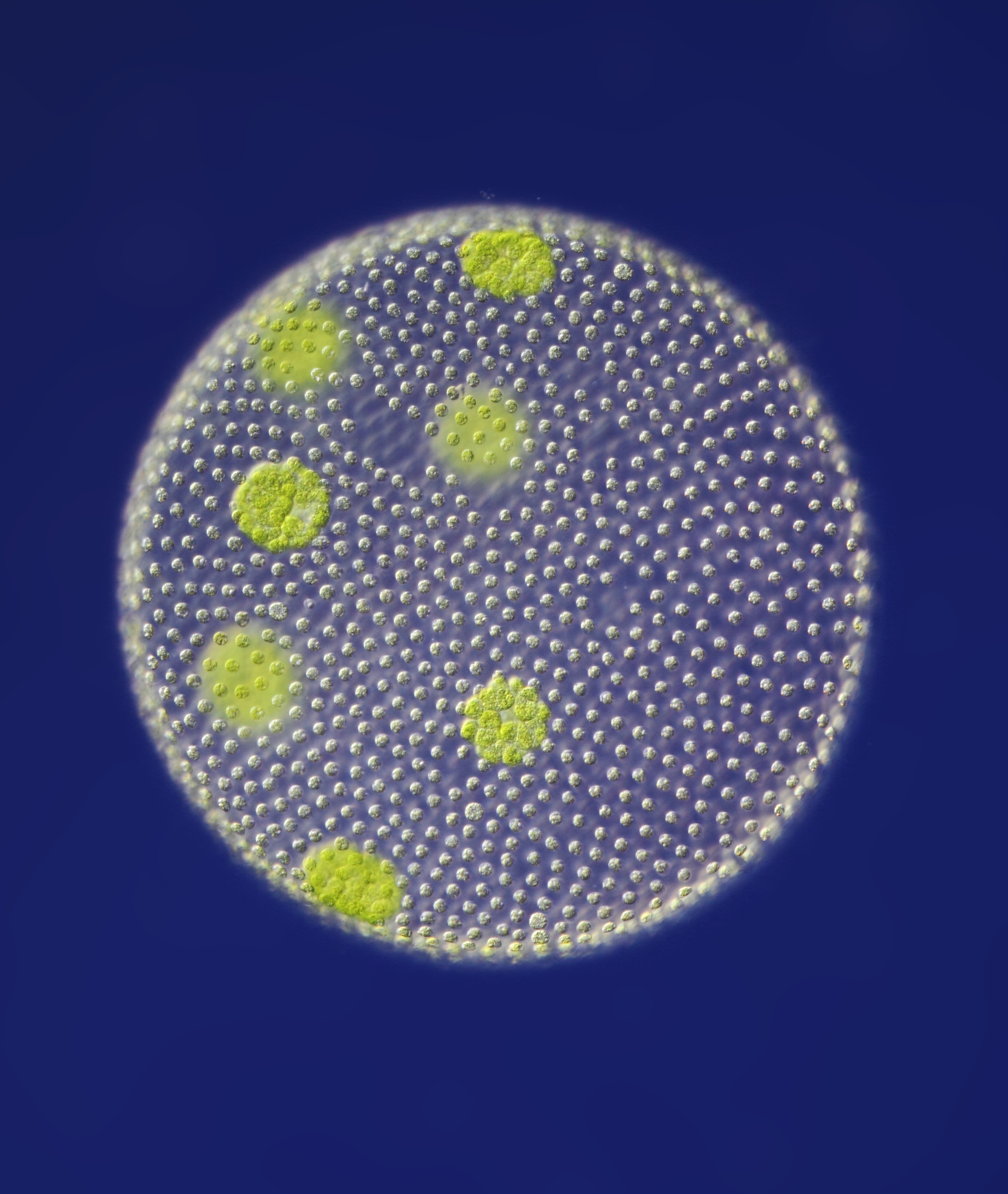Algae << AL jee >> are simple organisms that live in oceans, lakes, rivers, ponds, and moist soil. A single organism of this type is called an alga. Some algae are microscopic and consist of just one cell, but others are large and contain many cells. Some species drift or swim, and others remain attached to stones or weeds in the water. Large marine algae are called seaweeds. Algae serve as food for fish and other water animals.

A few algae live on land, growing on trees or other land plants, soil, and rocks. Other kinds live on certain animals, including sloths and turtles. Still others make their homes inside plants or animals.
Algae include dinoflagellates and diatoms, most of which have only one cell. Many such algae occur with marine animals in drifting masses called plankton. Dinoflagellate cells swim by means of two hairlike structures called flagella. Diatoms have cell walls made up of silica. These “skeletons” resist decay and may accumulate on the ocean floor. In some places, they form a whitish material called diatomite, which has many industrial uses. See Diatom; Plankton.

Some algae multiply rapidly in parts of lakes, rivers, and oceans. These growing algae may form dense populations called algal blooms. Algal blooms often occur where such waste materials as sewage and fertilizers flow into the water and provide additional nourishment for algal growth. Algal blooms sometimes upset the natural balance of life in water. The water eventually may become extremely low in oxygen, killing fish and other water creatures. Algal blooms may also make the water unfit for use by people.
Structure of algae.
All algae have cells with at least one nucleus. The cells contain a green pigment called chlorophyll in specialized cell parts known as chloroplasts. Chlorophyll helps return oxygen to the air as it absorbs energy from sunlight in the process called photosynthesis. Many algal cells contain other pigments besides chlorophyll. The cells grow and reproduce by cell division. Most kinds can also reproduce sexually.
Scientists traditionally classify true algae in the kingdom Protista. Another group of organisms, the cyanobacteria are sometimes called blue-green algae. But blue-green algae are a type of bacteria. See Cyanobacteria.
Kinds of algae.
Biologists often group algae according to color—brown, green, or red. Brown algae occur plentifully along many seashores of temperate zones—that is, the parts of the world between the tropics and the polar regions. Some kinds, called kelps, grow as much as 200 feet (60 meters) long (see Kelp). Manufacturers use algin, a gummy substance obtained from kelp, to thicken cosmetics, ice cream, mayonnaise, and other products. Some brown algae are used as fertilizer.

Green algae occur in both fresh and salt water. Most species are microscopic and live in lakes, ponds, and streams. Huge quantities of such algae may color an entire lake. Larger species of green algae grow along seashores. Many tropical coral beaches consist of pieces of green seaweeds filled with lime. Some scientists are experimenting with growing varieties of green algae for food.
Red algae live mostly in subtropical and temperate seas, where they sometimes grow with corals. A few species live in fresh water. Some red algae have blue as well as green and red pigments. Certain red algae provide sources of agar, a gelatinlike substance used in laboratories to grow bacteria. A kind of red alga called nori is typically sold dried as papery sheets, which people often use in making sushi rolls.
